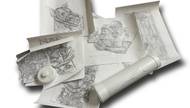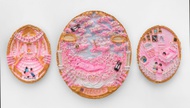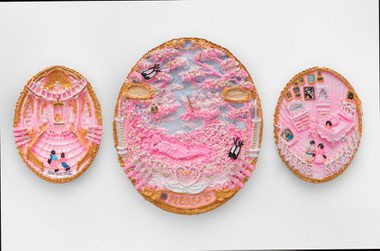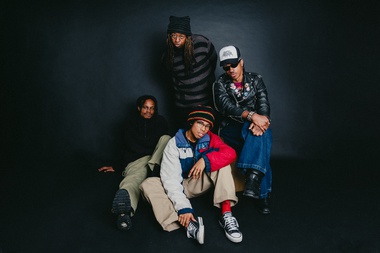Do kids love Lego? Sure; just ask your bare feet in the middle of the night. But the appeal of the brick—and yes, this lengthy shutdown—is luring an increasing number of adults to discover the calming qualities of working with colorful, pleasing-to-hold blocks that can be used to build virtually anything and, unlike puzzle pieces, always fit together no matter what. Here’s an introduction to this “system of play.”
LIFE OF LEGO
Founded by master carpenter Ole Kirk Kristiansen during the early 20th century as a purveyor of wooden toys, the Billund, Denmark-based Lego Group—its name a portmanteau of “leg godt,” Danish for “play well”—began making its “automatic binding bricks” in 1949, alongside a variety of products that included toy trucks, wooden blocks and pinball games. In 1955, Kristiansen’s son Godtfred Kirk Christiansen decided to streamline Lego’s offerings into a single “system of play,” centered around an early version of the plastic bricks we know today.
Over the next 65 years, Lego continually refined its play system, improving upon its interlocking qualities (1958); adding wheels (1961), larger Duplo bricks for toddlers (1969), erector set-like Technic gears and axles, and minifigures (1978); and even reformulating the materials used to make the bricks themselves: originally made from cellulose acetate, today they’re a polymer called ABS (acrylonitrile butadiene styrene). Recently, the company began experimenting with a plant-based plastic made from sugar cane.
AN EVOLVING TOY STORY
These days, most people think of Lego in terms of licensed sets: Harry Potter, Star Wars, DC Superheroes and the like. (Lego has its own proprietary sets, as well: the City and Ninjago series stand out.) Most of these sets are enormous, detailed builds with lots of tiny pieces; odds are you’ve put one together for your kids when they got bored or frustrated with the project. There’s nothing inherently wrong with these branded behemoths—they draw in millions of new young Lego fans yearly—but there’s not much imagination required to assemble them.
A few years ago, however, an adult generation weaned on Lego returned to it—and the first thing they did was throw out the instructions. Makers recognized the play system’s virtually limitless potential for building most anything. Artists became intrigued with Lego’s color spectrum and the challenges of making rounded figures with its largely rectangular bricks and flat tiles. And others simply recognized in Lego a calming, creative thing to do with one’s hands—building tiny objects or abstract shapes, or simply taking a random fistful of bricks and tiles and seeing what happens next. These “Adult Fans of Lego” (AFOL—yes, it’s a real thing) inspired the Lego Group to launch its Architecture series—model kits featuring such famed buildings as the Space Needle and the Louvre, and iconic city skylines such as Shanghai and, yes, Las Vegas.
HOW TO (ADULT) LEGO
You don’t need to spring for one of Lego’s grown-up themed sets—such as the 960-piece Fiat 500, or the Central Perk café from Friends—to climb aboard the AFOL bandwagon.
Get your hands on some bricks. If your kids have outgrown their old Lego sets, just look under their beds and reclaim them. If you don’t have kids, check on eBay for bags of loose Lego; you can buy them fairly cheaply by the pound. Lego also sells loose brick assortment starter kits, which you can find online at Target or Amazon or through Lego itself (lego.com/en-us/themes/classic).
Wash your secondhand Lego. The company recommends water no hotter than 104 degrees and a soft cloth or sponge. But old bricks can survive a trip through a dishwasher and/or washing machine—sealed up inside a fine mesh bag, cleansed with mild detergent and forgoing the drying cycle that will almost certainly melt the plastic. (Spread them out on a towel to air-dry. Avoid direct sun; the colors will fade.) But do wash them. Even pre-COVID-19, using secondhand Lego bricks without a good wash was ill-advised.
Sort the bricks and tiles by color. You don’t have to do this, but it’s an integral part of good building. What was a chaos of colors and shapes can become a finely systematized painter’s palette.
Read up. Lego publishes a lot of how-to books; this article draws information from one, 2009’s The Lego Book. But there are a number of independent titles worth checking out, particularly Jeff Freisen’s Lego Micro Cities and Tom Alphin’s The Lego Architect. Alphin also has a website, brickarchitect.com, that provides invaluable building and storage tips.
Start small. A few years back, a kid entered a single, skinny rectangular yellow brick in a Lego-building contest. His concept? “Worm.” Joke or not, that’s a fine way to start working with Lego: Reduce what you want to build to its most basic shape, and make it with as few bricks and as few colors as possible. That will begin to give you a feel for what Lego bricks can make—and the confidence to go bigger and bolder.
Visit Lego Ideas. Head to ideas.lego.com to see what other makers are coming up with. Some could become real, licensed Lego sets. Some are just the right kind of crazy. And if you want to blow your own mind, search this site for “tensegrity” and see what builders are doing with bricks and magnets.
SPARE PIECES
• Legoland: The Lego Group licenses this chain of family theme parks, with locations in Carlsbad, California, and worldwide. The parks have some thrill rides, but they’re mostly about hands-on play.
• Lego House: Located in Billund, this is the Willy Wonka factory of Lego—a 129,000 square-foot architectural showplace filled with “Lego waterfalls” and 25 million bricks (legohouse.com/en-gb). Like the theme parks, it’s currently closed due to COVID-19.
• Movies:While the Lego Group has been co-financing animated “brickfilms” for years, most of them were direct-to-video efforts until 2014’s funny and inventive The Lego Movie upped the ante. Its success created an entire franchise, with a sequel and two spin-offs.
• Lego Masters: This reality competition series, hosted by The Lego Batman Movie star Will Arnett, pits adult Lego masters against one another in a series of increasingly complex building challenges.








